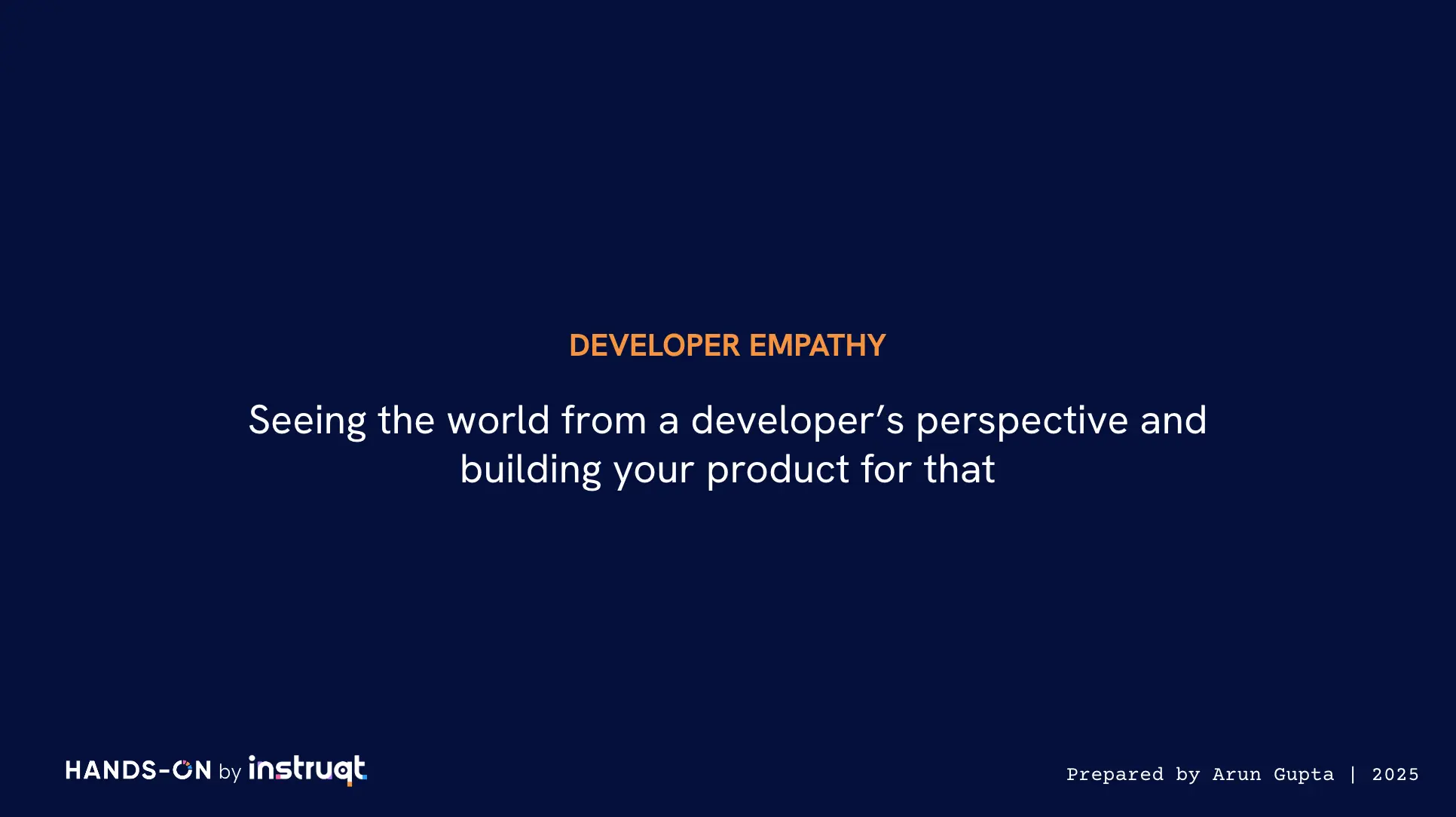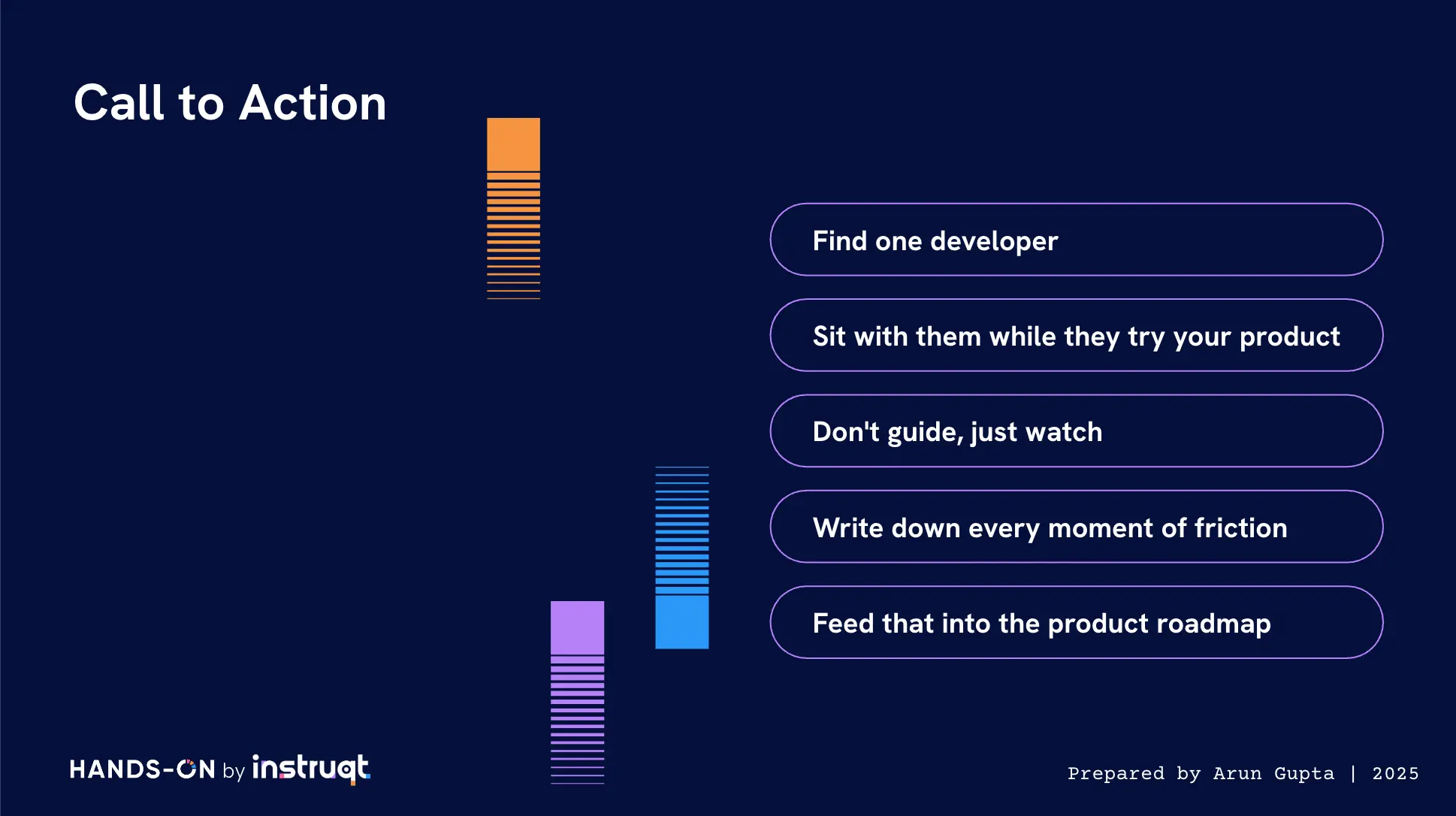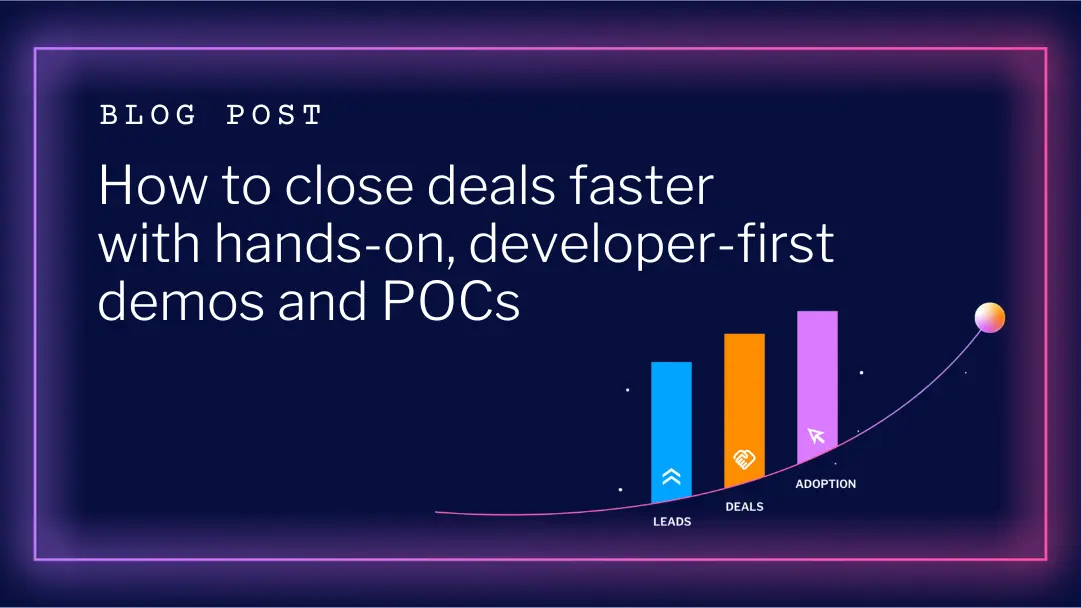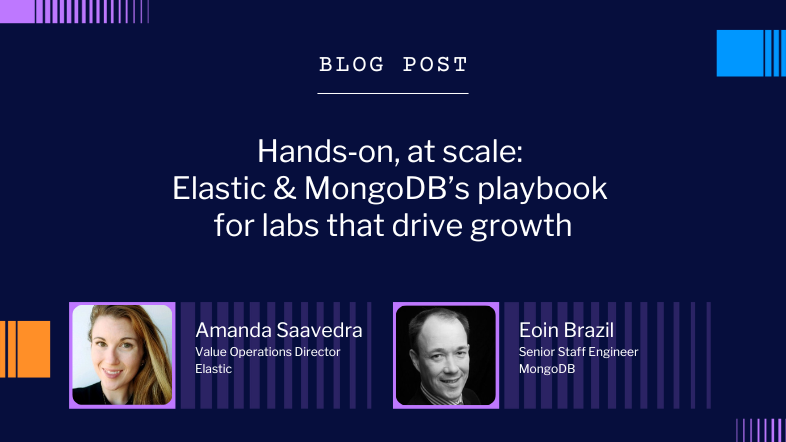Developer empathy: The secret to unlocking developer adoption and product-led growth (PLG)

In today’s AI-driven, developer-first world, one truth stands out: empathy fuels adoption. At HANDS-ON by Instruqt, our flagship virtual event for technical educators, developer advocates, and go-to-market innovators, industry leaders explored how hands-on learning is redefining the way companies drive developer engagement, product adoption, and technical enablement
Opening the event, Arun Gupta, a global authority on developer relations (DevRel), open source strategy, and product-led growth, delivered an opening keynote that set the tone for the day. His message? Empathy isn’t a soft skill; it’s a growth strategy.
The climb to empathy: Lessons from Mount Kilimanjaro
Arun began with a personal story about summiting Mount Kilimanjaro—a seven-day journey defined by teamwork, trust, and reflection. “We made it to the top,” he said, “because we refused to leave anyone behind.”
That same philosophy applies to developer adoption. Without empathy, without understanding what developers truly need, no team reaches the summit of success. The climb mirrors every developer journey: you can’t push users to the top; you guide them there through clear documentation, seamless onboarding, and meaningful interaction.
Why developer empathy drives adoption

Most companies say they care about developers, but their products often tell a different story. Unclear docs, clunky onboarding, and broken experiences drive developers away faster than any marketing message can bring them back.
“If you don’t understand developers,” Arun warned, “they won’t understand your product, and your product-led growth (PLG) is dead before it starts.”
Developer empathy is the “right-fit shoe” for building momentum. Without it, every step toward adoption feels harder. With it, developers move naturally, confidently, and collaboratively toward success.
The four pillars of developer empathy

Arun outlined four core pillars that turn empathy into action:
1. Understand the developer’s context
Know your audience’s world—their tools, deadlines, and constraints. Build experiences that meet them where they are. Empathy means designing sandbox environments, virtual labs, and workflows that fit seamlessly into their stack.
2. Reduce friction everywhere
Every unnecessary step adds friction. Replace multi-step setup processes with one-click experiences. Shorten Time to Hello World with browser-based labs, virtual machines, and cloud sandboxes that help developers learn and build faster.
3. Communicate clearly
Speak the developer’s language. Replace cryptic error codes with actionable insights. Empathy means making documentation, release notes, and support channels feel like part of the same, respectful conversation.
4. Practice active listening
Empathy doesn’t stop at launch. Close the loop between feedback and action. When developers see their suggestions reflected in your roadmap, you turn users into advocates—and advocates into champions.
From empathy to adoption: The PLG flywheel

Developer empathy fuels the developer adoption flywheel—a self-reinforcing cycle that drives sustainable growth:
Empathy → Adoption → Retention → Advocacy → Growth → More empathy
When developers feel understood, they engage. When they engage, they adopt. When they adopt, they advocate—and advocacy becomes your most powerful acquisition channel.
That’s how empathy powers product-led growth: by making the product itself the best salesperson.
The five pillars of product-led growth
Arun connected empathy to measurable outcomes through five PLG pillars:
- Frictionless user experience: Make sign-up and onboarding effortless. Think GitHub Codespaces or Canva’s one-click templates-instant access, instant value.
- Value-based monetization: Let usage unlock upgrades naturally, like Zoom’s seamless “extend meeting” prompt.
- Data-driven optimization: Use analytics to track activation, retention, and feature usage. Eliminate friction where developers stall.
- Built-in growth mechanisms: Encourage collaboration and sharing. Every invite, link, or shared track amplifies reach and adoption.
- User-centric product development: Build with developers, not just for them. Incorporate continuous feedback loops into your developer experience (DevEx) strategy.
How Instruqt enables developer empathy
At Instruqt, we believe empathy isn’t theoretical—it’s experiential. Our hands-on labs empower technical teams to feel what their users feel, turning understanding into action.
With browser-based, sandboxed environments, you can:
- Deliver frictionless technical training and developer onboarding
- Build interactive proofs of concept (POCs), demo environments, and workshops that convert
- Scale developer enablement without complex setup or infrastructure
- Measure engagement, completion rates, and time to value (TTV)
By helping companies teach, demo, and sell through hands-on experiences, Instruqt enables true developer empathy at scale-accelerating both product adoption and community growth.
Go far, together

Arun closed with a timeless reminder:
“If you want to go fast, go alone. If you want to go far, go together.” –African proverb
Developer empathy isn’t just about being nice; it’s about being right for your users. When you build with developers, you don’t just earn adoption. You earn advocacy.
Ready to build developer empathy into your go-to-market strategy?
Empathy begins with experience, and Instruqt makes it easy to deliver.
Book a personalized demo to see how hands-on learning can help your team scale developer engagement, shorten time to value, and drive product-led growth from the first click.





.png)

